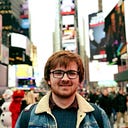Seoul: South Korea, part 2 🇰🇷
The weather was cloudy and humid as we headed out into the city. The forecast looked fairly bleak for the next few days, with rain more than likely to come. Nevertheless it was dry as we emerged from the subway station at Seoul city hall.
It was an interesting journey, albeit only a 15 minute one. I found out the hard way that the separate area of seats are for the elderly, a man of around 70 pulled me away from the seat. In my defence if I’d seen him I would have gladly moved, but it wasn’t to be. Not your average subway trip.
Above ground made for more pleasant viewing. A short walk took us to the Seoullo 7017 Skypark. This is a stretch of old highway which has been turned into a garden walkway. It is lined with various plants and bushes, giving a very green tint to a section of central Seoul.
It’s undoubtedly central too, we found out soon after that the best station for the park is the central station as the garden practically crosses it. It makes for a peaceful place for people to put themselves above the organised chaos of city life, and you can even play a tune on one of the several pianos dotted around. Unique and quirky best describes it.
Later on during the afternoon we made a trip over to the Seoul museum of art. A relatively modest building, the museum has everything which you would expect a contemporary art gallery to have. It had the noteworthy temporary display, in this case it was David Hockney, and also the outlandish yet incredibly thought provoking modern twist of local culture.
The latter came through an exhibition made of of hundreds and hundreds plastic inflatable balls. They were to represent the contemporary contributions from those who had helped the lead artist, Eunme Ahn, to create her piece of using interpretive dance. It was an eye catching exhibit of simplicity, and one which was seemingly popular with visitors.
Fortunately for us an extra point of interest was located just around the corner from the museum. Deoksugung Park is a walled compound containing palaces from long ago in Korea’s history. For almost 300 years members of the Korea royally family stayed within the walls, up until the Japanese invasion of 1910.
The buildings are from the Joseon period of Korea’s history and the architecture dates back hundreds of years. The park is situated opposite the futuristic city hall and is surrounded by dominant hotels and business buildings, yet it is refreshing to see this nugget of history kept preserved for Koreans and visitors alike. At just 1000w for entry, you would be silly not to attend. A brief walk around would take no more than 20 minutes.
